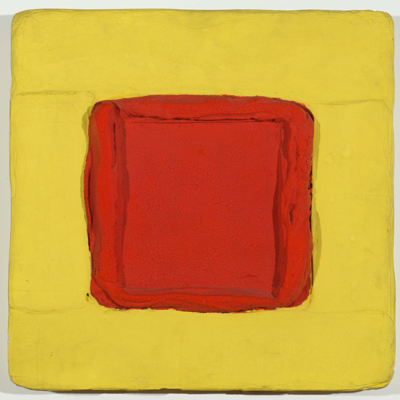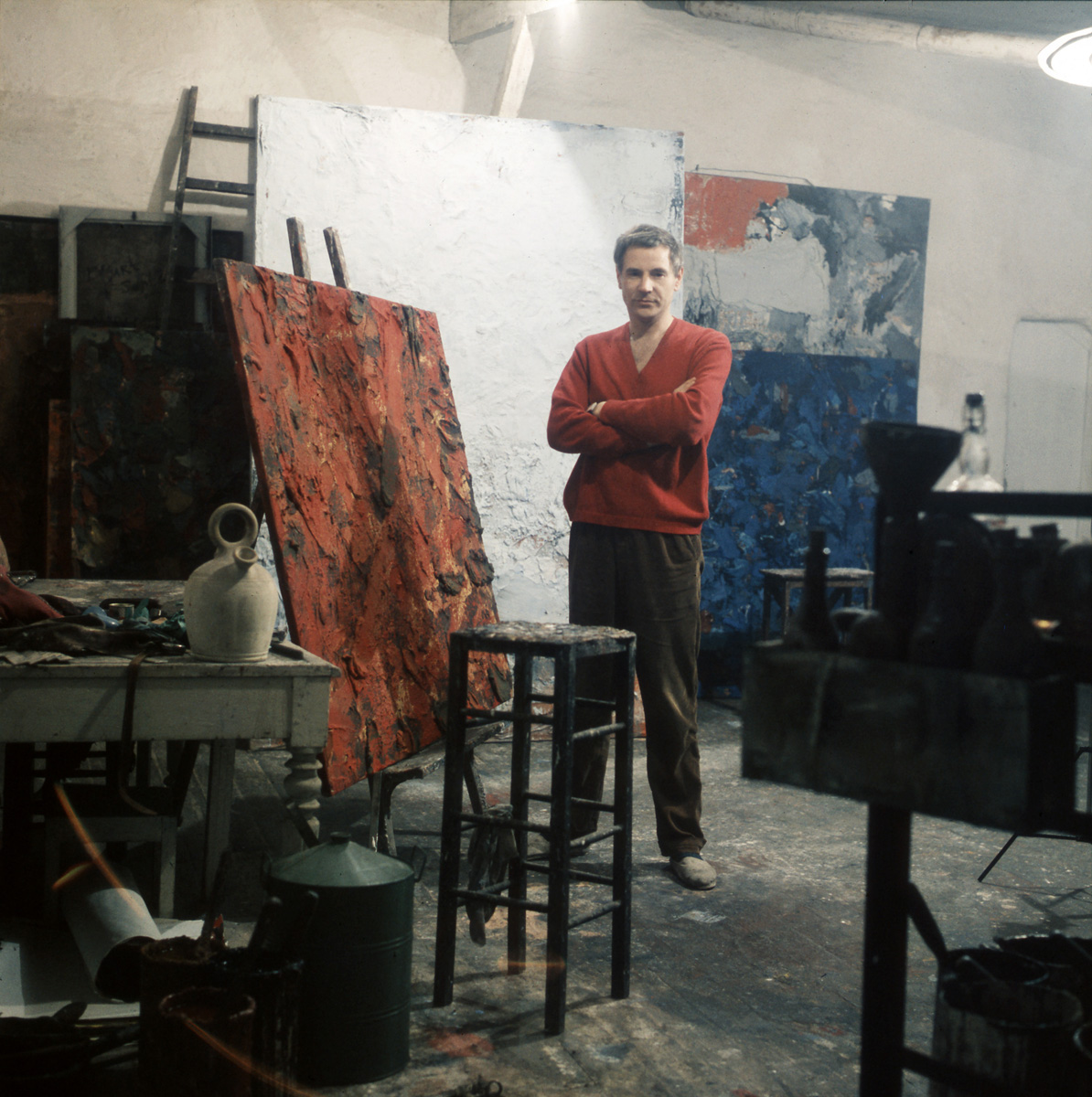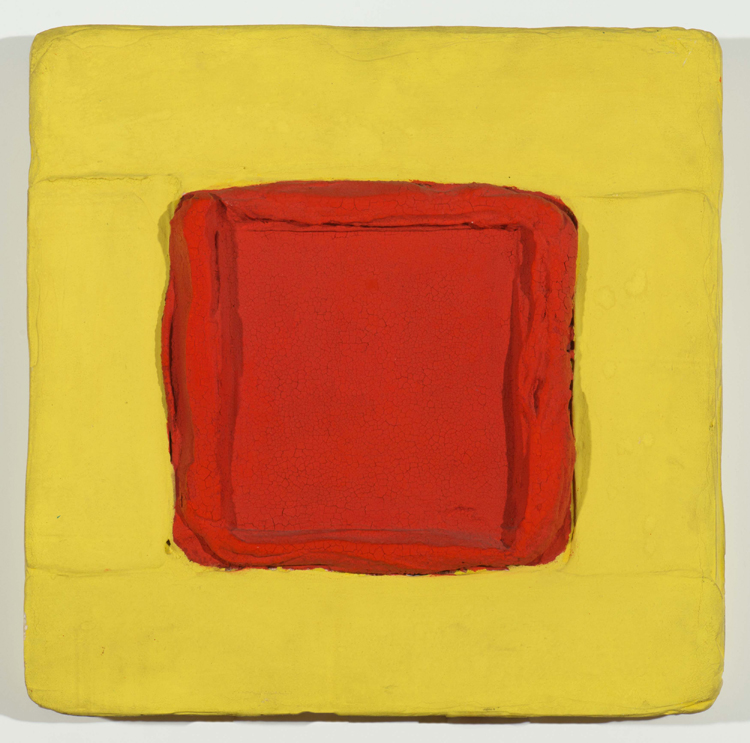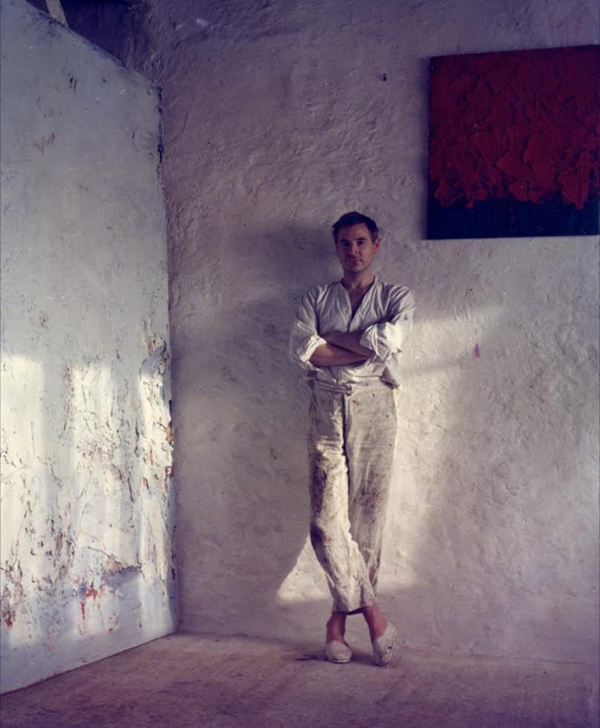Maus Contemporary
 Bram Bogart (1921-2012), "Rood & Geel (Red & Yellow)", 1967 Bram Bogart (1921-2012), "Rood & Geel (Red & Yellow)", 1967 |
one-on-one Bram Bogart Rood & Geel (Red & Yellow) 1967
May 31 - August 23, 2019 |
The exhibition one-on-one invites gallery visitors to discover one painting drawn from a private US collection:
Rood & Geel (Red & Yellow), 1967, by Belgian artist Bram Bogart
Bram Bogart (born Abraham van den Boogart on July 12,1921 in Delft, the Netherlands - died May 2, 2012 in Sint-Truiden, Belgium) moved to Paris, France in 1946, and the then twenty-five-year-old painter is credited as an early artist of art informel - or art autre. art informel is a term coined by the French art critic Michel Tapié in his 1952 book Un Art Autre and refers to the influential European movement concurrent to the American Abstract Expressionism of the 1950s. Like its American counterpart, art informel is expressive, artist-oriented abstraction rooted in the works of artists such as Kandsinky, Klee, and Dubuffet, as well as in Surrealist automatism, and describes a swathe of approaches to abstract painting in the 1940s and 1950s which had in common an improvisatory methodology and highly gestural technique.
 Bram Bogart in his studio, 1960 - photographed by Henk Hilterman
Bram Bogart in his studio, 1960 - photographed by Henk Hilterman
Bram Bogart in his studio, 1960 - photograph by Henk Hilterman
Bogart began to concentrate on working with impasto during the early 1950s and is closely associated to the Cobra mouvement emerging in the late 1950s. With thick layers of boldly applied and colorful paint, he developed an expressionist style resulting in pure abstraction. In 1961 Bogart permanently relocated to Belgium, becoming a Belgian citizen in 1969. This is also the period during which he began to experiment with three-dimensional medium - a mix of mortar, siccative (drying agent), powdered chalk, varnish, and raw pigment - applied to large, heavy wooden structures, allowing painting-like wall hanging, such as the 1967 work Rood & Geel.
Unlike his contemporaries, Bram Bogart developed a method of working in which, inspired by nature, he allowed the physical materiality of the paint itself to give shape to the painting. Not interested in expressing human emotions, but finding his inspiration in the material alone, applying it to canvas, and later to wooden panels. A truly physical, performance-like act, taking seemingly unmanageable materials, including a heavy, cement-like substance, and model it into monumental compositions with an admirable technical control. These process-based paintings, in which color and material not only co-exist, but sublime one another, result in a visually tactile texture of immense sculptural quality. Bogart's unique way of physically emphasizing on three-dimensionality within the realm of painting, has fundamentally changed the very way we think about painting - what painting is, and can become.
Bogart notably represented Belgium at the 1971 35th Venice Biennale, and his work can be found in the collections of Tate Modern in London, the Centraal Museum in Utrecht, and the Stedelijk Museum voor Actuele Kunst in Ghent, among others. In 2011, and in celebration of his 90th birthday, Bogart presented an exhibition of his monochrome paintings at Bernard Jacobson Gallery in London, and retrospective of his work was shown at Galerie Richard in Paris. In 2013, his work was the subject of an extensive retrospective, titled Bram Bogart: Master of Matter, at the Cobra Museum of Modern Art in Amstelveen, in the Netherlands.
 Bram Bogart, "Rood & Geel", 1967 - private US collection
Bram Bogart, "Rood & Geel", 1967 - private US collection
Bram Bogart
Rood & Geel
1967
mixed media
41,9 by 42,4 cm (approx. 16.5 by 16.7 in.)
private collection
not for sale
signed and dated '67 (for 1967) on the right side
signed, titled, dated October 1967, and numbered 12 on back
Provenance:
Galerie Willy Schoots, Eindhoven, NL
private collection, The Netherlands
private US collection
 Bram Bogart, photographer unknown, late 1950s / early 1960s
Bram Bogart, photographer unknown, late 1950s / early 1960s
portrait of Bram Bogart, late 1950s / early 1960s - photographer unknown
 Bram Bogart photographed by Annelies Meuleman, ca. 2005
Bram Bogart photographed by Annelies Meuleman, ca. 2005
Bram Bogart photographed by Annelies Meuleman, ca. 2005
